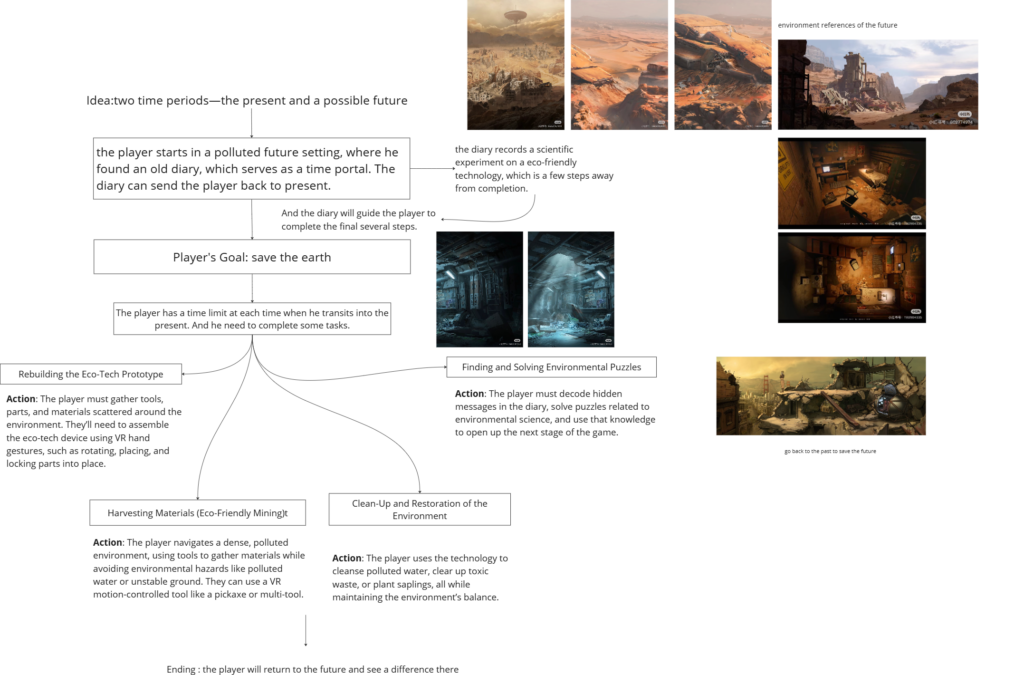Week 2 – Idea Pitch
For our second week, we conducted a pitch session for three distinct game ideas, each tackling environmental awareness from a unique angle. From a greenhouse management simulation to a backyard adventure at a microscopic scale, and a time-traveling journey between a dystopian future and the present, our team explored various ways to engage players in climate action. After careful consideration, we decided to move forward with Small Human and Big Tree, a game that immerses players in a miniature world to reveal the often-overlooked effects of climate change. This concept stood out for its ability to offer both an engaging gameplay experience and a fresh perspective on environmental awareness.
Three Ideas We Pitched
1. SNS+Resource Management
A simulation management game where players oversee an idle greenhouse, applying green and sustainable development principles while utilizing a fictional social media platform to promote and advocate for climate action.
The game aims to encourage people to reflect on the climate change issue by enhancing the appeal of individual actions.
Feedback
– SNS aligns with the idea of social norms. Sharing can influence others. Teach teens about this effect and help them understand the impact of social norms.
– Challenge: It needs to feel approachable. Educate the viewer, then reward the player. Integrate two systems (greenhouse and SNS) into one cycle.
– Show how the greenhouse affects the player’s life. – Emphasize community action: share outcomes with the community and demonstrate how it impacts the player’s neighborhood.
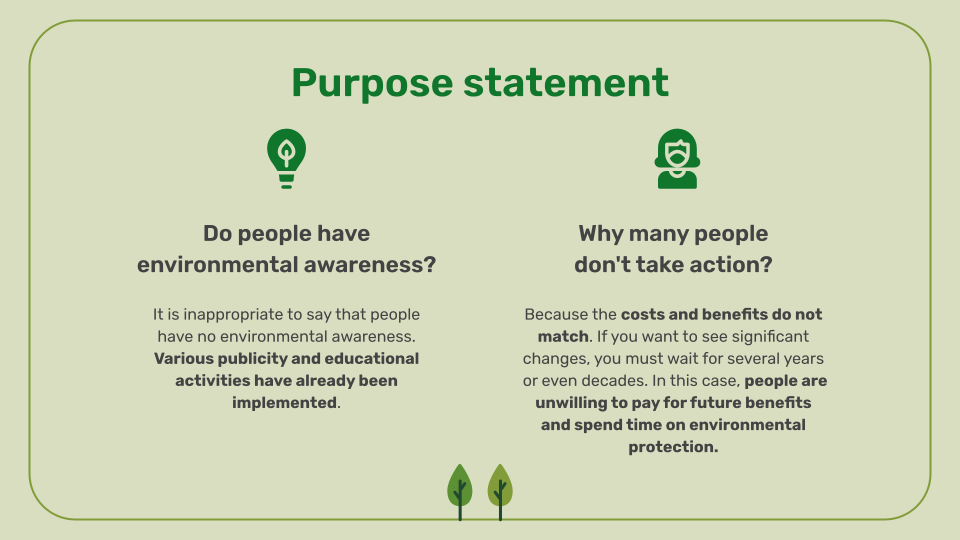
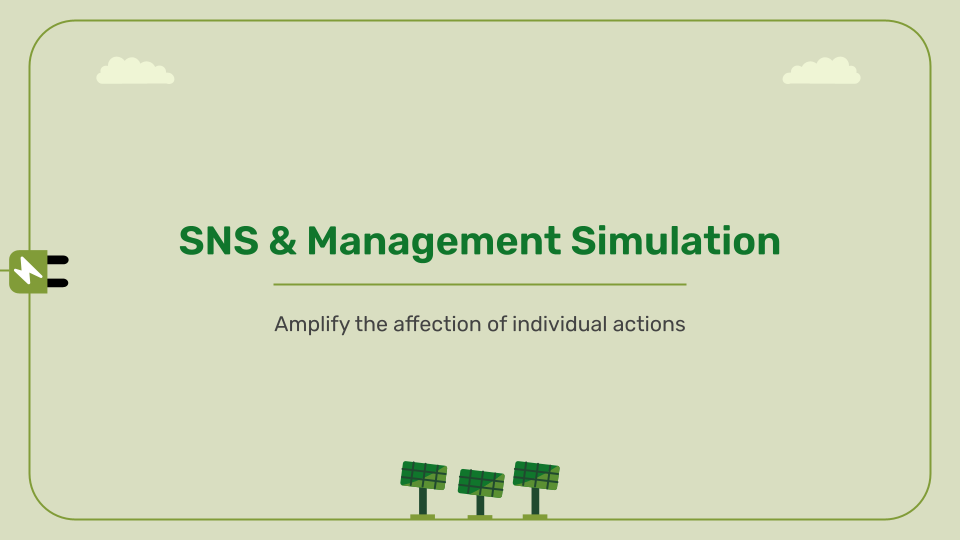
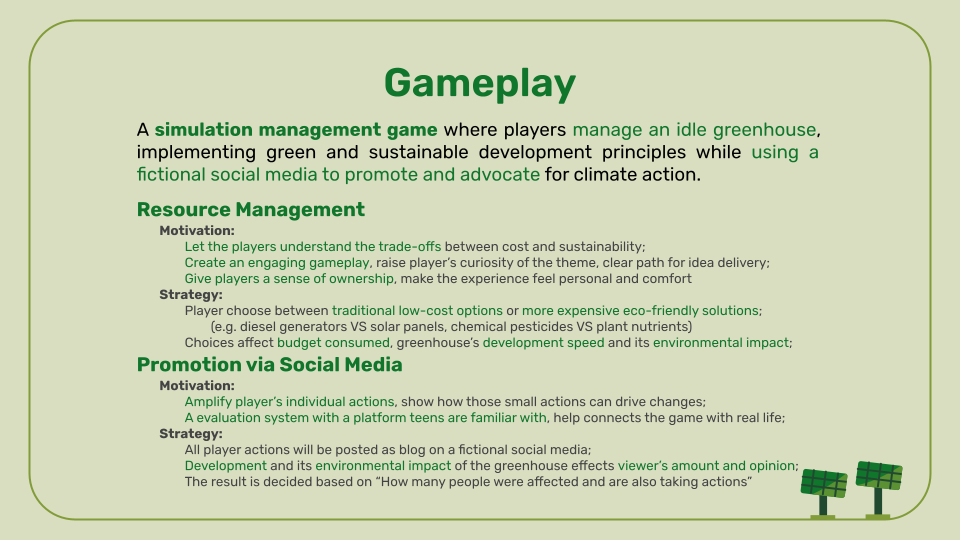
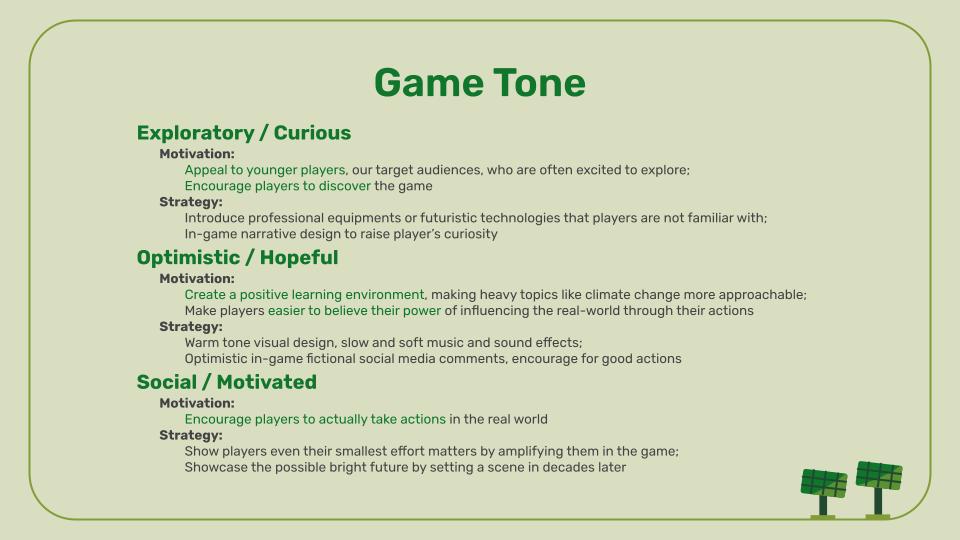
2. Small Human and Big Tree
The player controls a character who has turned into a tiny size in his backyard. He starts on an adventure on a tree in his backyard, exploring the miniature ecosystem around him. As he climbs the tree, he must complete various tasks and encounter animals affected by climate change, helping them along the way. Upon reaching the top of the tree, he sees factories and smoke in the distance and how they have influenced the environment. Suddenly, he falls from the tree, and when he wakes up, he has returned to his standard size.
This game aims to give players a new perspective on climate change, showing them that even a tiny backyard hosts its own ecosystem. It emphasizes that the effects of climate change are not distant but exist all around us, affecting even the most miniature environments. At the same time, the game is designed to ensure our target audience enjoys an engaging and immersive gameplay experience.
Feedback
– Strong in VR, as player is in the environment and feeling small. – Emphasize the importance of local ecosystems, even in one’s own backyard, and the need to care for them. Highlight hidden ecosystems.
– Showcase how invasive species disrupt ecosystems, especially due to climate change.
– Create a sense of scale: the player feels small yet capable of making an impact.
– Consider small environmental actions within one’s backyard that benefit the environment but often go unnoticed.
The player is doing the action.
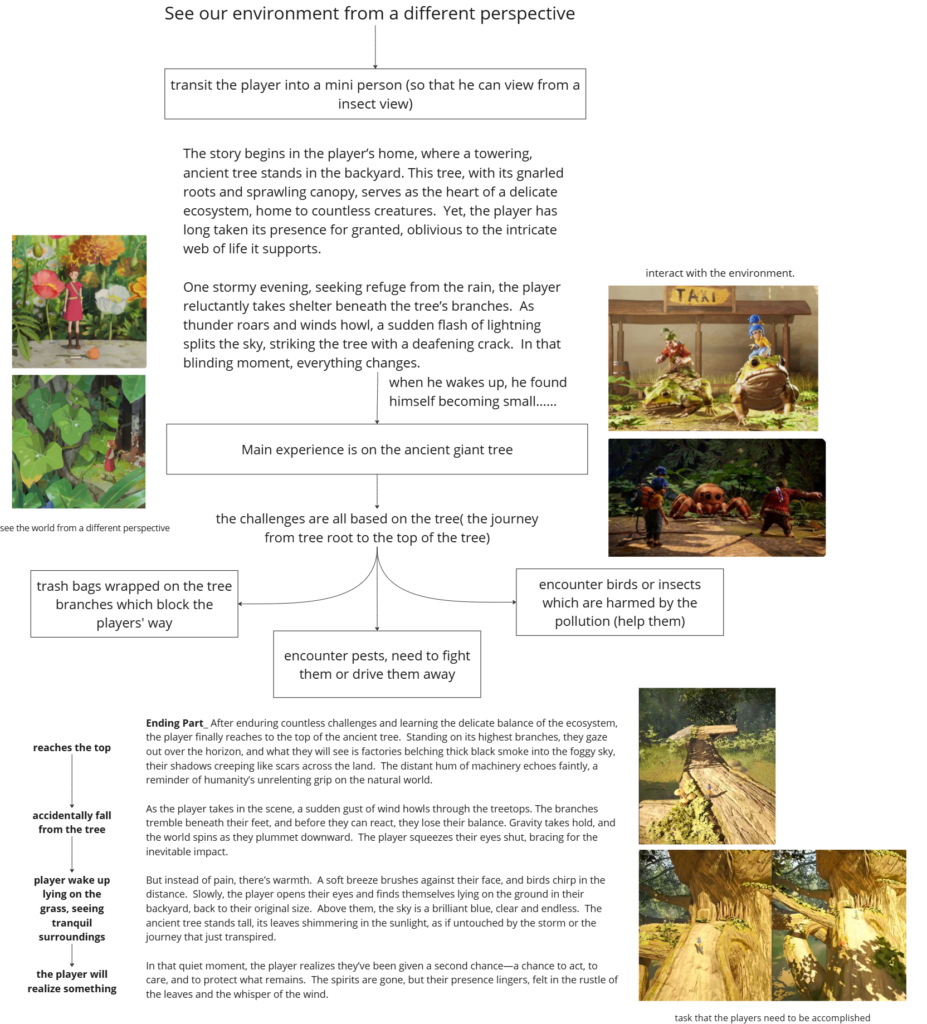
3. Time Traveler
The concept revolves around a game featuring a two-time-period transition, where the player accidentally travels from a polluted future to “the present,” a time resembling our real-world environment. The player’s actions in the present directly influence the environmental conditions of the future.
The game begins in a dystopian future, where the player discovers an old diary that serves as a time portal. This diary enables the player to travel back to the present for a limited duration during each trip. By completing several tasks, the player can alter the future and improve the state of the Earth.
This game aims to show the possibly bright future if people start environmental protection action.
Feedback
– A reverse timeline can be powerful, focusing on rewilding efforts. It’s not about saving the world but rather saving the community or a specific space.
– Task: Scale down the approach.
– Combine three actions into one, focusing on rewilding efforts. Show their impacts on the future.
– Focus on actions that matter to the community, such as building soil or planting chestnut trees.
